Rebuild the Universe/생산 시설
덤프버전 :
분류
 상위 문서: Rebuild the Universe
상위 문서: Rebuild the Universe 1. 개요[편집]
Rebuild the Universe의 생산 시설을 설명 하는 문서 입니다.
2. Quantum[편집]
양자 단위의 생산 시설. 양자 폼이나 중성미자 등이 이에 속한다.
2.1. Quantum foam[편집]

양자 폼. 가장 기본적이자 첫번째로 만들게 되는 생산 시설이다. [math(10^{-35})]미터[1]의 크기를 가지고 있다.Quantum foam (also referred to as space-time foam) is a concept in quantum mechanics devised by John Wheeler in 1955. The foam is supposed to be conceptualized as the foundation of the fabric of the universe. Additionally, quantum foam can be used as a qualitative description of subatomic space-time turbulence at extremely small distances.
2.2. Neutrino[편집]

중성미자. [math(10^{-24})]미터[2]의 크기를 가지고 있다.A neutrino is an electrically neutral, weakly interacting elementary subatomic particle. The neutrino (meaning 'little neutral one' in Italian) is denoted by the Greek letter ν. All evidence suggests that neutrinos have mass but the upper bounds established for their mass are tiny even by the standards of subatomic particles.
2.3. Preon[편집]

프레온. [math(10^{-21})]미터[3]의 크기를 가지고 있다.In particle physics, preons are 'point-like' particles, conceived to be subcomponents of quarks and leptons. The word was coined by Jogesh Pati and Abdus Salam in 1974. Interest in preon models peaked in the 1980s but has slowed as the Standard Model of particle physics continues to describe the physics mostly successfully
2.4. Electron Core[편집]

전자. [math(10^{-18})]미터[4]의 크기를 가지고 있다.The electron is a subatomic particle with a negative elementary electric charge. Electrons belong to the first generation of the lepton particle family, and are generally thought to be elementary particles because they have no known components or substructure.
3. Molecular[편집]
분자 단위의 생산 시설. 우라늄 핵자나 탄소나노튜브 등이 이에 속한다.
3.1. Proton[편집]
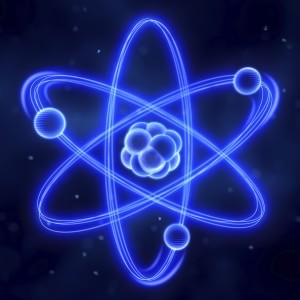
The proton is a subatomic particle and a positive electric charge of 1 elementary charge. Protons and neutrons are collectively referred to as 'nucleons'. The name proton was given to the hydrogen nucleus by Ernest Rutherford in 1920.
양성자. 근데 사진에 나오는 것은 원자핵이다..? [math(10^{-15})]미터[5]의 크기를 가지고 있다.
3.2. Uranium Necluon[편집]

Uranium is a silvery-white metallic chemical element in the actinide series of the periodic table, with symbol U and atomic number 92. A uranium atom has 92''' protons and 92 electrons, of which 6 are valence electrons.
우라늄 핵자. [math(10^{-14})]미터[6]의 크기를 가지고 있다.
3.3. Gamma Ray[편집]

Gamma radiation, also known as gamma rays, and denoted by the Greek letter γ, refers to electromagnetic radiation of extremely high frequency and therefore high energy per photon. Gamma rays are ionizing radiation, and are thus biologically hazardous.
감마선. [math(10^{-12})]미터[7]의 크기를 가지고 있다.
3.4. Angstrom[편집]

The angstrom is often used in the natural sciences and technology to express the sizes of atoms, molecules, and microscopic biological structures, the lengths of chemical bonds, the arrangement of atoms in crystals, the wavelengths of electromagnetic radiation, and the dimensions of integrated circuit parts.
[math(\text{\AA})]. [math(10^{-10})]미터[8]의 크기를 뜻하는 단위다.
3.5. Carbon Nanotube[편집]

Carbon nanotubes (CNTs) are allotropes of carbon with a cylindrical nanostructure. These cylindrical carbon molecules have unusual properties, which are valuable for nanotechnology, electronics, optics and other fields of materials science and technology.
탄소나노튜브. [math(10^{-9})]미터[9]의 크기를 가지고 있다.
4. Cellular[편집]
미생물 및 세포 단위의 생산 시설.
4.1. Cell Membrane[편집]

The cell membrane (also known as the plasma membrane or cytoplasmic membrane) is a biological membrane that separates the interior of all cells from the outside environment. The cell membrane is selectively permeable to ions and organic molecules and controls the movement of substances in and out of cells.
세포막. [math(10^{-8})]미터[10]의 크기를 가지고 있다.
4.2. Largest Virus[편집]

A virus is a small infectious agent that replicates only inside the living cells of other organisms. Viruses can infect all types of life forms, from animals and plants to bacteria and archaea. Viral infections in animals provoke an immune response that usually eliminates the infecting virus.
가장 큰 바이러스. [math(10^{-7})]미터[11]의 크기를 가지고 있다.
4.3. White Blood Cell[편집]

White blood cells (WBCs), also called leukocytes or leucocytes, are the cells of the immune system that are involved in defending the body against both infectious disease and foreign invaders. The number of white blood cells in the blood is often an indicator of disease.
백혈구. [math(10^{-5})]미터[12]의 크기를 가지고 있다.
5. Miniature[편집]
비교적 작은 생산 시설. 주위에서 볼 수 있는 컵/머리카락등이 이에 속한다.
5.1. Human Hair[편집]

Hair is a filamentous biomaterial that grows from follicles found in the dermis. Hair is one of the defining characteristics of mammals. The human body, apart from areas of glabrous skin, is covered in follicles which produce thick terminal and fine vellus hair.
머리카락. [math(10^{-4})]미터[13]의 크기를 가지고 있다.
5.2. Grain of Sand[편집]

Sand is a naturally occurring granular material composed of finely divided rock and mineral particles. The composition of sand is highly variable, depending on the local rock sources and conditions, but the most common constituent of sand in inland continental settings and non-tropical coastal settings is silica, usually in the form of quartz.
모래알. [math(\rm0.1\,cm)]의 크기를 가지고 있다.
5.3. Coffee Bean[편집]

A coffee bean is a seed of the coffee plant, and is the source for coffee. It is the pit inside the red or purple fruit often referred to as a cherry. Even though they are seeds, they are referred to as 'beans' because of their resemblance to true beans.
커피 콩. [math(\rm1\,cm)]의 크기를 가지고 있다.
5.4. Cup[편집]

A cup is a small, open container used for carrying and drinking drinks. It may be made of wood, plastic, glass, clay, metal, stone, china or other materials, and may have a stem, handles or other adornments.
컵. [math(\rm10\,cm)]의 크기를 가지고 있다.
6. Organic[편집]
기본적인 생산 시설. 사람이나 나무등이 이에 속한다.
6.1. Human[편집]

Modern humans are the only extant members of the hominin clade, a branch of great apes characterized by erect posture and bipedal locomotion; manual dexterity and increased tool use; and a general trend toward larger, more complex brains and societies.
사람. [math(\rm1.7\,m)]의 크기를 가지고 있다.
6.2. Giant Earthworm[편집]

An earthworm is a tube-shaped, segmented animal commonly found living in soil, that feeds on live and dead organic matter. Its digestive system runs through the length of its body. It conducts respiration through its skin.
거대지렁이. 무려 [math(\rm7\,m)](...)의 크기를 가지고 있다.
6.3. Oak Tree[편집]

An oak is a tree or shrub in the genus Quercus, having approximately 600 extant species. The common name 'Oak' may also appear in the names of species in related genera, notably Lithocarpus. The genus is native to the Northern Hemisphere, and includes deciduous and evergreen species extending from cool temperate to tropical latitudes in Asia and the Americas.
떡갈 나무. [math(\rm20\,m)]의 크기를 가지고 있다.
6.4. Redwood Tree[편집]

Sequoioideae (redwoods) is a subfamily in the family Cupressaceae. The redwood species contains the largest and tallest trees in the world. These trees can live to an age of thousands of years. The entire subfamily is endangered.
세퀘이아 나무. [math(\rm100\,m)]의 크기를 가지고 있다.
7. Massive[편집]
큰 생산 시설. 에펠 탑이나 후버 댐 등이 이에 속한다.
7.1. Hoover Dam[편집]

Hoover Dam, once known as Boulder Dam, is a concrete arch-gravity dam in the Black Canyon of the Colorado River, on the border between the U.S. states of Arizona and Nevada. It was constructed between 1931 and 1936 during the Great Depression and was dedicated on September 30, 1935, by President Franklin D. Roosevelt.
후버 댐. [math(\rm200\,m)]의 크기를 가지고 있다.
7.2. Eiffel Tower[편집]

The Eiffel Tower is an iron lattice tower located on the Champ de Mars in Paris. It was named after the engineer Gustave Eiffel, whose company designed and built the tower. The tower is the tallest structure in Paris and the most-visited paid monument in the world.
에펠 탑. [math(\rm300\,m)]의 크기를 가지고 있다.
7.3. Angel Falls[편집]

Angel Falls is a waterfall in Venezuela. It is the world's highest uninterrupted waterfall, with a height of 979 m (3,212 ft) and a plunge of 807 m (2,648 ft). The waterfall drops over the edge of the Auyantepui mountain in the Canaima National Park, a UNESCO World Heritage site in the Gran Sabana region of Bolívar State.
앙헬 폭포. 전 세계에서 가장 높은 폭포 이며, [math(\rm900\,m)]의 크기를 가지고 있다.
7.4. Mt.Everest[편집]

Mount Everest is the Earth's highest mountain. It is located in the Mahalangur section of the Himalayas. Its peak is 8,848 metres (29,029 ft) above sea level and is the 5th furthest point from the center of the Earth.
에베레스트 산. 지구 상에서 제일 높은 곳이며, [math(\rm8.8\,km)]의 크기를 가지고 있다. [14]
8. Planetary[편집]
소행성 및 행성 단위의 생산 시설.
8.1. Ganymed[편집]

1036 Ganymed is the largest near-Earth asteroid, at about 32–34 km in diameter. It was discovered by Walter Baade on October 23, 1924. Owing to its early discovery date, Ganymed has a rich observational history.
1036 Ganymed 소행성. [math(\rm32\,km)]의 크기를 가지고 있다. 자세한 내용은 https://en.wikipedia.org/wiki/1036_Ganymed 참조.
8.2. Nereid[편집]

Nereid is the third-largest moon of Neptune. It has a highly eccentric orbit. It was the second moon of Neptune to be discovered, by Gerard Kuiper in 1949. It is named after the Nereids, sea-nymphs of Greek mythology and attendants of the god Neptune.
네레이드. 해왕성 에서 3번째로 큰 위성. [15] [math(\rm340\,km)]의 크기를 가지고 있다.
8.3. Pluto[편집]
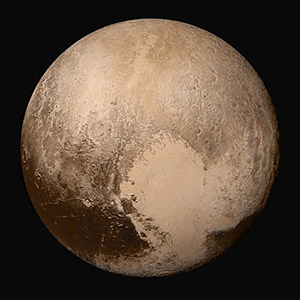
Pluto is the largest object in the Kuiper belt, and the tenth-most-massive body observed directly orbiting the Sun. It is the second-most-massive known dwarf planet, after Eris. Like other Kuiper-belt objects, Pluto is composed primarily of rock and ice and is relatively small, approximately one-sixth the mass of the Moon and one-third its volume.
명왕성. [math(\rm2{,}300\,km)]의 크기를 가지고 있다.
8.4. Mars[편집]

Mars is the fourth planet from the Sun and the second smallest planet in the Solar System, after Mercury. Named after the Roman god of war, it is often described as the 'Red Planet' because the iron oxide prevalent on its surface gives it a reddish appearance.
화성 [math(\rm6{,}800\,km)]의 크기를 가지고 있다.
8.5. Earth[편집]

Mars is the fourth planet from the Sun and the second smallest planet in the Solar System, after Mercury. Named after the Roman god of war, it is often described as the 'Red Planet' because the iron oxide prevalent on its surface gives it a reddish appearance.
지구 [math(\rm12{,}700\,km)]의 크기를 가지고 있다.
8.6. Uranus[편집]

Uranus is the seventh planet from the Sun. It has the third-largest planetary radius and fourth-largest planetary mass in the Solar System. Uranus is similar in composition to Neptune, and both are of different chemical composition than the larger gas giants Jupiter and Saturn.
천왕성 [math(\rm51{,}000\,km)]의 크기를 가지고 있다.
8.7. Jupiter[편집]
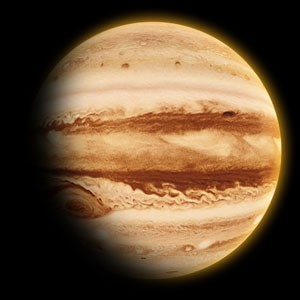
Jupiter is the fifth planet from the Sun and the largest planet in the Solar System. It is a gas giant with mass one-thousandth of that of the Sun but is two and a half times the mass of all the other planets in the Solar System combined.
목성 [math(\rm140{,}000\,km)]의 크기를 가지고 있다.
8.8. Alpha Centauri C[편집]

Proxima Centauri is a red dwarf about 4.24 light-years from the Sun, inside the G-cloud, in the constellation of Centaurus. It was discovered in 1915 by Scottish astronomer Robert Innes, the Director of the Union Observatory in South Africa, and is the nearest known star to the Sun
알파 센타우리 C [math(\rm280{,}000\,km)]의 크기를 가지고 있다.
8.9. Alpha Centauri B[편집]
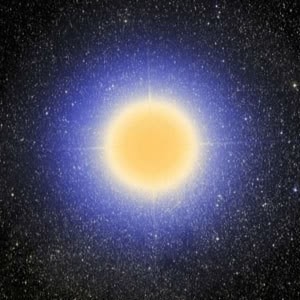
Alpha Centauri or Toliman is the brightest star in the southern constellation of Centaurus and the third brightest star in the night sky. The Alpha Centauri system is located 4.37 light years from the Sun, making it the closest star system to our Solar System.
알파 센타우리 [math(\rm1{,}000{,}000\,km)]의 크기를 가지고 있다.
8.10. Sun[편집]

The Sun is the star at the center of the Solar System. It is almost perfectly spherical and consists of hot plasma interwoven with magnetic fields. Once regarded by astronomers as a small and relatively insignificant star, the Sun is now thought to be brighter than about 85% of the stars in the Milky Way.
태양 [math(\rm1{,}400{,}000\,km)]의 크기를 가지고 있다.
9. Stellar[편집]
항성 단위의 생산 시설.
9.1. Sirius A[편집]

Sirius is the brightest star in the night sky. With a visual apparent magnitude of −1.46, it is almost twice as bright as Canopus, the next brightest star. Sirius appears bright because of both its intrinsic luminosity and its proximity to Earth. It is 25 times more luminous than the Sun.
시리우스 [math(\rm2{,}500{,}000\,km)]의 크기를 가지고 있다.
9.2. Regulus[편집]
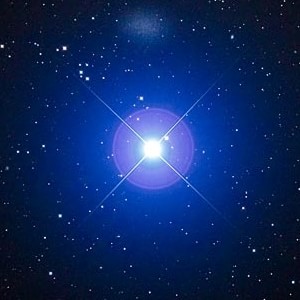
Regulus is the brightest star in the constellation Leo and one of the brightest stars in the night sky, lying approximately 79 light years from Earth. Regulus is a multiple star system composed of four stars that are organized into two pairs. Regulus A consists of a blue-white main-sequence star.
레굴루스 [math(\rm5{,}800{,}000\,km)]의 크기를 가지고 있다.
9.3. Pollux[편집]

Pollux is a star in the northern constellation of Gemini, the Twins. It is an evolved giant star with an orange hue. At an apparent visual magnitude of 1.1, Pollux is the brightest star in the constellation; brighter even than its neighbor Castor (Alpha Geminorum).
폴룩스 [math(\rm11{,}000{,}000\,km)]의 크기를 가지고 있다.
9.4. Arcturus[편집]

Arcturus of the constellation Boötes is the brightest star in the northern celestial hemisphere. With a visual magnitude of −0.04, it is the fourth brightest star in the night sky. It is a relatively close star at only 36.7 light-years from Earth, and, together with Vega and Sirius, one of the most luminous stars in the Sun's neighborhood.
아크투루스 [math(\rm36{,}000{,}000\,km)]의 크기를 가지고 있다.
10. Celestial[편집]
성운 단위의 거대 생산 시설.
11. Galactic[편집]
은하 단위의 거대 생산 시설.
12. Hypergalactic[편집]
장성 단위의 초거대 생산 시설.
13. Universal[편집]
우주 단위의 생산 시설... 이라고는 하는데 여기에 들어가는 생산 시설은 단 하나 뿐이다. 바로 Entire Universe.[16]
13.1. Entire Universe[편집]

우주 그 자체.The Universe is all of spacetime and everything that exists therein, including all planets, stars, galaxies, the contents of intergalactic space, the smallest subatomic particles, and all matter and energy. Similar terms include the cosmos, the world, reality, and nature. The observable universe is about 46 billion light years in radius.
 이 문서의 내용 중 전체 또는 일부는 2023-11-02 18:29:01에 나무위키 Rebuild the Universe/생산 시설 문서에서 가져왔습니다.
이 문서의 내용 중 전체 또는 일부는 2023-11-02 18:29:01에 나무위키 Rebuild the Universe/생산 시설 문서에서 가져왔습니다.